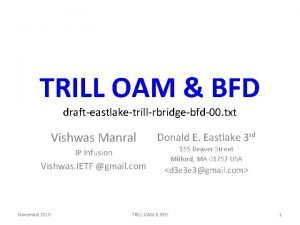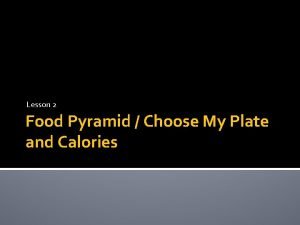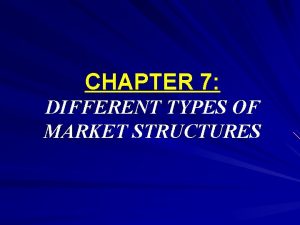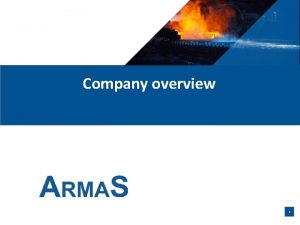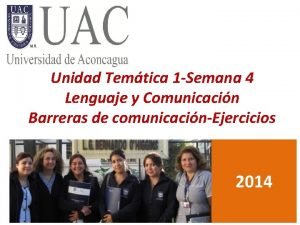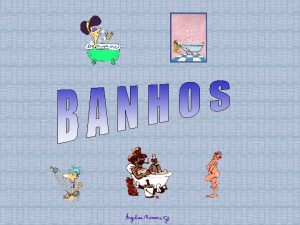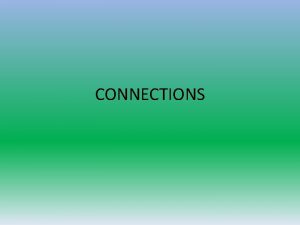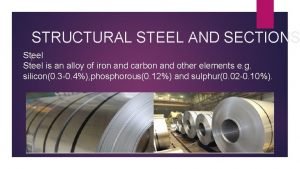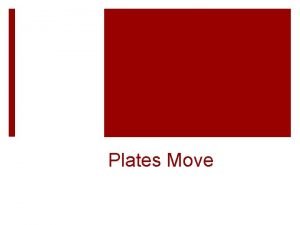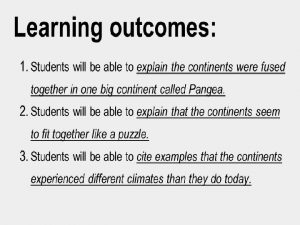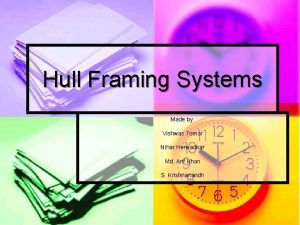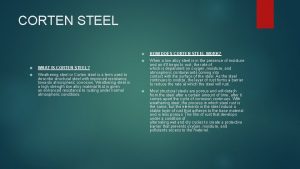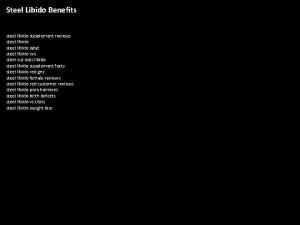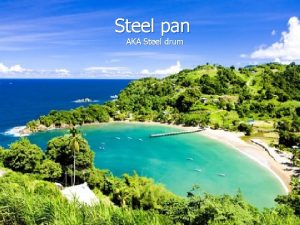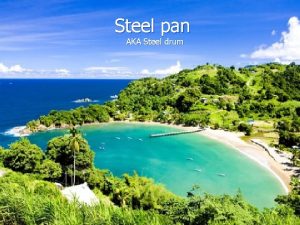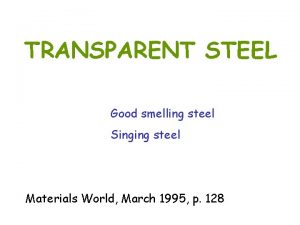STEEL PLATES AND SECTIONS Group A Vishwas tomar












- Slides: 12

STEEL PLATES AND SECTIONS Group A Vishwas tomar Mohd. Arif khan Nihar herwadkar Krishnanandh S.

Standard steel sections and processes involved in their manufacture

Commercially available standard steel sections (A) FLAT PLATE l (B) OFFSET BULB PLATE l

Commercially available standard steel sections (C) EQUAL ANGLE l (D) UNEQUAL ANGLE l

Commercially available standard steel sections (E) CHANNEL l (F) TEE l

Processes involved to make these sections PROCESSES INVOLVED Machining Cutting Drilling Pressing Rolling

Processes involved to make these sections Machining: l l overhead electric cranes with 5 to 15 tonnes capacity transport plates and sections to each machine process. cutting flat plates to the required profiles is automated with very sophisticated machines being used for the purpose. cutting is achieved by the use of oxy-fuel flame or plasma-arcs. a profiling machine is used to cut a plate into one or more, or a series of complicated shapes.

Processes involved to make these sections Drilling: l to drill holes in steel plates or sections. l generally consist of a single drilling head mounted on a radial arm. l used for making bolted covers and portable sections, etc.

Processes involved to make these sections Cutting: l smaller plates such as beam knees and various brackets are cut in a hydraulically operated guillotine. l the plates feeded into the guillotine are supported by roller castors and positioning of the cut edge is by the hand.

Processes involved to make these sections Pressing: l hydraulic presses are extensively used in the shipyards for bending, straightening, flanging, dishing, and swaging plates. l this is done with the plate cold. l the press is slower when used for bending and requires greater skill as compared to rolling.

Processes involved to make these sections Rolling: l hydraulically operated heavy duty bending rolls are used for rolling shell plates etc. to the correct curvature. it consists of two lower rolls, revolving in the same direction with the plate being fed between them. a larger diameter top roll runs idly. Either or both ends of the top rolls can be adjusted for height and the two lower rolls have adjustable centres.

Processes involved to make these sections Rolling continued… l Modern bending rolls can handle plated upto 45 mm thick and its possible to roll them to half a circle. l These large rolls can also be supplied with accessories allowing them to undertake heavy flanging work with the pressure being exerted by the upper beam , e. g. ‘troughing’ corrugated bulkhead sections
 Vishwas manral
Vishwas manral Vishwas manral
Vishwas manral Choose my plat.gov
Choose my plat.gov Monopolistic company examples
Monopolistic company examples Slovenian steel group
Slovenian steel group Barreras semanticas ejemplos
Barreras semanticas ejemplos Ar verbs in spanish preterite
Ar verbs in spanish preterite A mal tiempo, buena cara significado
A mal tiempo, buena cara significado Puntos anatomicos para tomar la presion arterial
Puntos anatomicos para tomar la presion arterial A veces duele tomar decisiones
A veces duele tomar decisiones Donde se puede tomar el pulso
Donde se puede tomar el pulso Tira a roupa para tomar banho
Tira a roupa para tomar banho Pulso braquial
Pulso braquial
